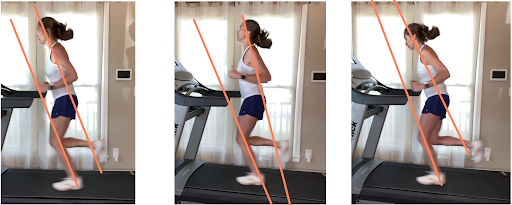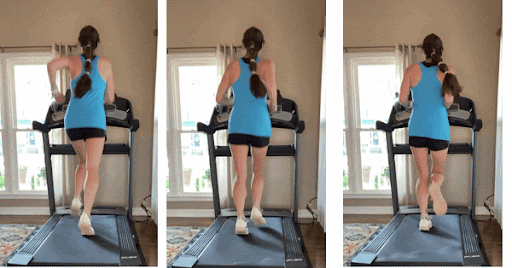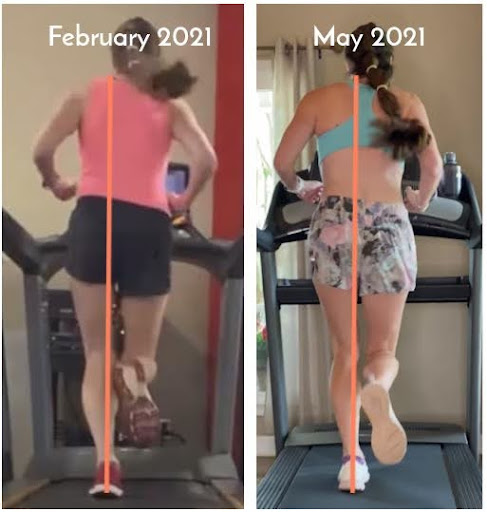
Fixing Your Form: Analyze Running Gait Without Tripping Over It
Apr 11, 2025When you set out to analyze running gait, it’s tempting to focus on making quick fixes while you’re out on a run — adjusting your stride, tweaking your posture, or trying to mimic the “perfect” form. You can find a lot of information (sometimes contradicting) around form, gait, and how to "fix" your stride, but the truth is that mid-run isn’t the ideal time for corrections. In this post, we’ll dive into the biomechanics of running, what it really means to analyze running gait effectively, why conscious form adjustments during a run often backfire, and how a deeper understanding of your movement patterns can lead to lasting improvements. The goal? To help you run more efficiently, confidently, and with genuine joy.
Why You Shouldn’t Overthink Your Running Form While Running
You shouldn’t have to think about your running form WHILE you’re running.
Yes, I do use form cues with runners. Yes, I analyze running gait in order to inform how we approach training. But, while you are actually running is usually not the time to try to “fix” your stride.
First, because the ground contact time during your stride is shorter than your body’s proprioceptive processing time (your body’s sensing where it is in space and making conscious decisions based on that). You literally can’t think that fast! Instead, you’re likely to layer compensations on top of existing patterns, which can lead to inefficiency or injury.
And honestly? Being stuck in your head during a run is the fastest way to kill the joy of running.
Analyze Running Gait, Knowing There is No Perfect Form
Your body’s job is to load, stabilize, and propel — and it will find a way to do that. Forcing a different movement pattern mid-run, without addressing why your body chose its current one, often causes more harm than good.
This is where gait analysis comes in — not as a tool for in-the-moment correction, but to guide training outside of running: drills, strength, mobility, and breath work. These build better movement patterns that naturally show up in your stride.
Below is what I look for when analysing gait, including some form cues I might then use to reinforce those patterns.
How I Use Gait Analysis
Gait analysis is just one piece of the puzzle. When I analyze running gait, I always combine it with:
- Postural assessment
- Movement screening (squats, hinges, split squats, range of motion testing)
Side View: Key Checkpoints
1. Mid-Stance: The stack and forward lean.

Ideally, these lines are parallel. That means that you’re stacked and have a nice forward lean.
Being stacked is when your rib cage is positioned over your pelvis, and your thoracic diaphragm (your primary breathing muscle) aligns over your pelvic floor. This allows you to transfer force most effectively and maintain a good range of motion in all the ways important to running (rotation at the hips and torso, hip extension, and hip flexion).
The nice forward lean from there helps your foot land closer into your center of mass and your body transfers those ground reaction forces into forward propulsion more easily.
If lines converge at the bottom (middle image above), it often indicates a “pulling back” posture — think open scissors or cracked egg. If they converge at the top (right image above), it may mean you’re hunched forward.
Sometimes all it takes is an external cue like “gaze on the ground 15–20 feet ahead” or a reminder to keep a nice forward lean with “tits over toes” or “hankles (hinge at the ankles).” Other times, we need to do deeper work on restoring the stack through breathing drills and strength work.
2. Foot Strike: Short Front Stride, Strong Back End.
Your foot should land just slightly in front of your center of mass, not way out in front (braking) or directly underneath (no room to propel).
I don’t cue this. A good stack and a forward lean will naturally bring this into place. From there I might cue “push from the tush.” This cue encourages power coming from hip extension, a strong back end of your stride so that the foot then lands naturally slightly in front of your center of mass, and keeping vertical oscillation to a minimum.
That said, most runners won’t immediately feel this cue while running. It usually takes some off-the-run practice to develop the awareness and strength required to access that hip extension effectively.
Back View: Key Check Points
1. Arm Swing: Your First Glance into the Rotation System
Arm swing is often the first thing I notice when watching someone run. It’s the easiest visual cue to spot from across the road or trail—and it tells me something about what’s happening with their ability to rotate.
There’s no single “perfect” arm swing, but extremes in either direction give clues.

Notice as you go left to right in the above image the arm swing decreases as torso rotation increases?
- Minimal arm swing usually means there’s excessive rotation at the torso—often because the system lacks enough stiffness or control. These runners might benefit from improving core strength and that stack.
- Big, exaggerated arm swings often signal that the body isn’t getting enough rotation from the torso or hips, so it’s trying to create it by swinging the arms. These runners might benefit from improving rotation through rib and/or hip mobility.
- Asymmetric swing — when one arm swings more than the other. That’s a clue that the runner rotates more easily in one direction than the other.
This is the first glance. We’d need to dig deeper. We might assess rotation while seated and standing, check shoulder range of motion as a window to rib mobility, and check hip rotation range of motion.
Then, we can cue arm swing from there to reinforce that nice reciprocal rotation.
- Mini punches: Arms bent at 90 degrees, gently punching forward.
- Saw wood, don’t chop wood: Promotes smooth, reciprocal motion rather than exaggerated movements.
2. Midstance: Your ability to put force in the ground (and handle the forces that the ground puts into you)
Here, I assess how well your body organizes over each stance leg during mid-stance. For example, in left stance:
- Left heel, knee, hip align and the torso rotates so that even the head is almost stacked over the leg.
- Left hip to be higher than the right but just slightly. If the right hip is significantly lower, you’re likely not fully loading onto that stance leg.
- Right shoulder to be slightly higher than the left, with length along the whole right side body.

This isn’t just about a “hip drop.” It’s about the entire organization of the body over that leg. What’s your hip rotation like? Can you access internal rotation? Do your glutes have the length and strength needed to support you?
3. The Feet: Windows to The Whole Chain
A well-functioning stride typically lands nearer to the outside back edge of the foot, rolls through the midfoot, and pushes off through the big toe.
“Over Pronation” Pattern: A pattern with “too much pronation” might show the arch collapsing or the ankle falling inward. ("Over Pronation” in quotes because what we think of as overpronation is not really true pronation at all.) You might even see this in how the foot swings through—sometimes looking like an “egg beater” motion, with the heel whipping outward during the swing phase.
Over Supination Pattern: A pattern where the foot is more stuck in supination might look like someone running more on the outside edge of the foot or turning the foot out as a secondary means to capturing some pronation. You might even see this in how the foot swings through— with the heel whipping inward during the swing phase, sometimes even kicking the inside of the opposite calf.
Your shoe wear pattern can also tell you a lot about what’s happening at your feet.
And this can be asymmetric. Often, the right side is more supinated and the left more pronated.
The feet give us a window to all of the above too! Whether you’re seeing “too much pronation” or “too much supination,” the root cause may be at the hips, in how the pelvis is rotating. True pronation requires true internal rotation—so we need to connect the whole chain.
Stride Assessment Is About the Whole System
When I’m analyzing a runner’s gait, I’m never just looking at one piece in isolation. I’m asking:
- Can they organize their center of mass over their stance leg?
- Can they rotate through their hips and torso?
- Are they stacked well enough to access forward lean and efficient movement?
- How does what’s happening at the feet tie into what I’m seeing above?
The goal is not to cue you to run differently on the spot. The goal is never to cue you into a “better” stride on the run; it’s to build better movement patterns outside of running — so you don’t have to think about your form mid-run.
All so that you can just run freely and with joy!
If you are interested in gait analysis with me, check out my Full Assessment and Strategy Call. You would film yourself running either outside or on the treadmill. The confirmation email you receive after booking your session would include instructions for filming either way and uploading the videos (at least 2 business days before your appointment time). Then we would look at your gait in the context of the additional movement assessments during our session and create a custom strategy for you to help you feel stronger, more fluid, and free in your stride!
Don't miss a thing!
Join my newsletter, be the first to know about what's coming up, and get even more great content!

